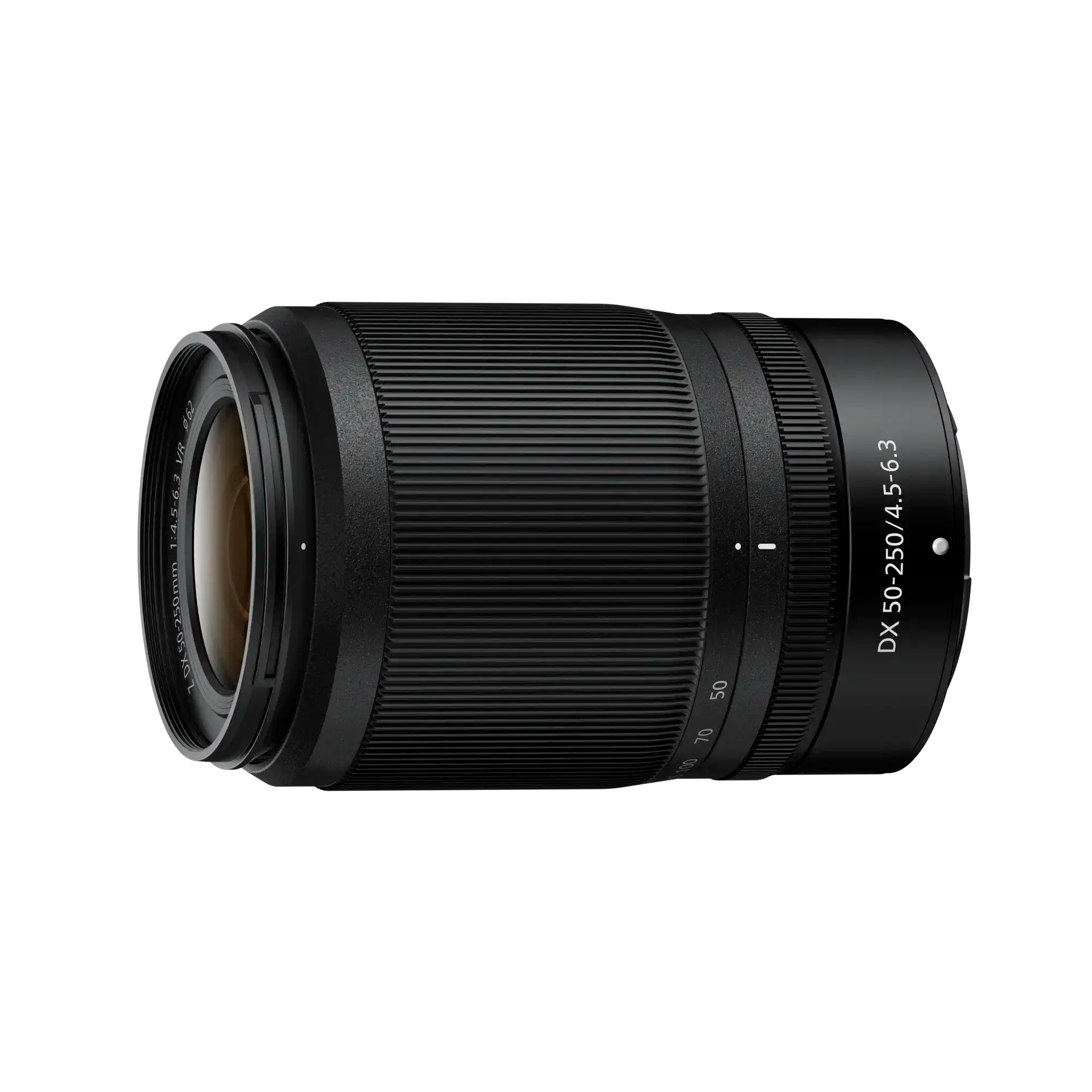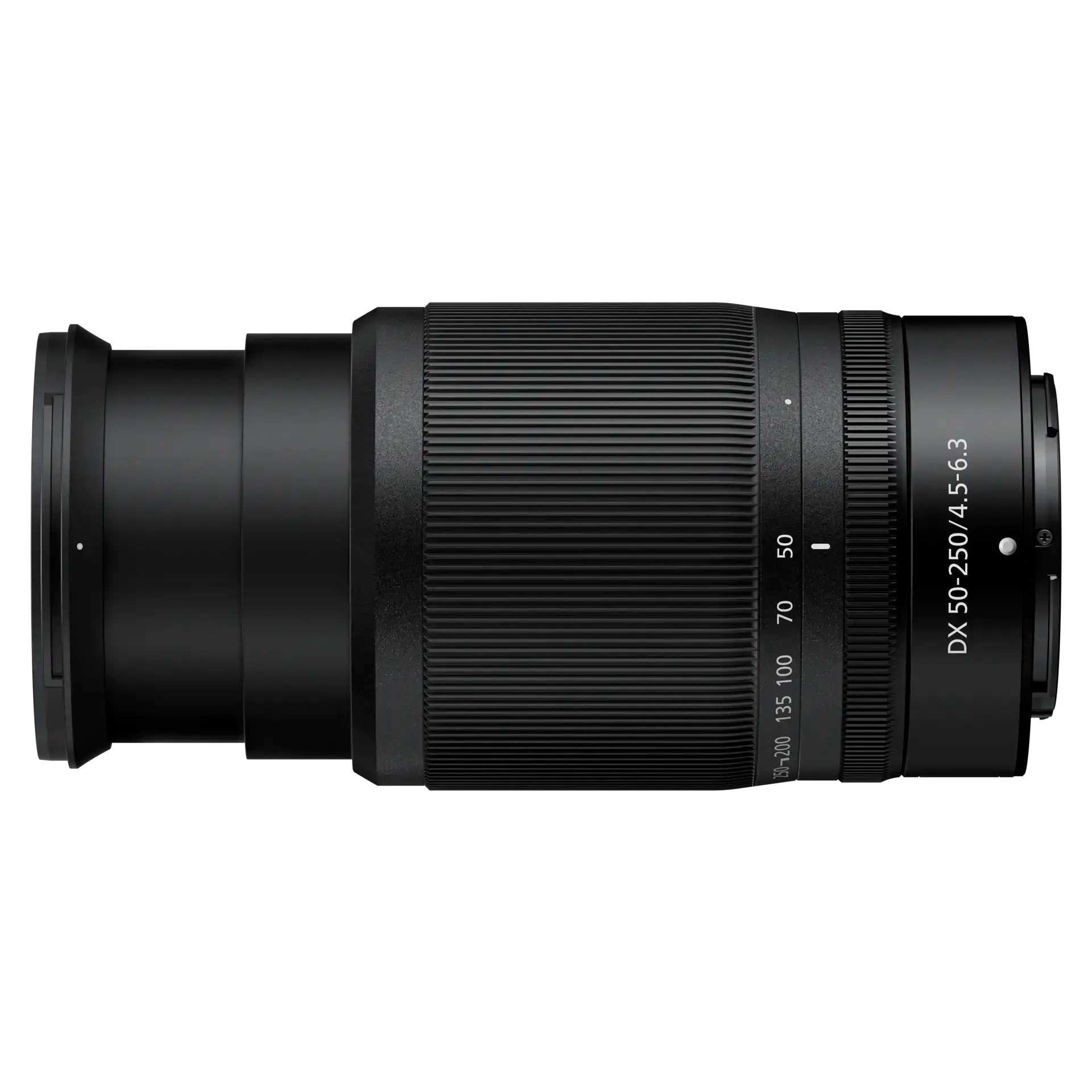Product Description
Nikon NIKKOR Z DX 50–250mm f/4.5–6.3 VR Lens
The Nikon NIKKOR Z DX 50–250mm f/4.5–6.3 VR Lens is a versatile and compact telephoto zoom lens designed for Nikon’s DX-format mirrorless cameras. With its impressive 5x zoom range, this lens is perfect for capturing distant subjects, from sports and wildlife to unique portraits, all while being lightweight and travel-friendly.

Key Features:
- Compact and Lightweight: Weighs just 405g, making it easy to carry and handle during extended shoots.
- Fast Autofocus: Equipped with quick and quiet autofocus, ideal for both stills and video.
- Wide Zoom Range: Covers a focal length range of 50–250mm, providing flexibility for various shooting scenarios.
- Minimum Focusing Distance: 0.5m, allowing for detailed close-ups and versatile framing.
- Silent Control Ring: Customisable for manual focus, aperture control, or exposure compensation, ensuring smooth operation.
- In-Lens Vibration Reduction (VR): Reduces camera shake and ensures stable images and video, even in low-light conditions.
- 7-Blade Rounded Diaphragm: Contributes to beautiful, smooth bokeh effects.

Optical Performance:
- Advanced Optical Design: Includes 16 elements in 12 groups, featuring one ED (Extra-Low Dispersion) glass element to minimise chromatic aberrations and enhance image clarity.
- Optimised Light-Gathering: Designed to deliver excellent performance in a variety of lighting conditions.

In-Lens Vibration Reduction:
- Effective Stabilisation: Reduces blur and improves image sharpness by compensating for camera shake, especially useful when shooting handheld or in challenging lighting conditions.
- Enhanced for Video: Provides steady footage even while moving, making it ideal for vlogging and dynamic video recording. The VR system allows for shooting at shutter speeds up to 5 stops slower than otherwise possible.

Practical and Versatile:
- Electromagnetic Aperture Control: Ensures precise exposure control, particularly useful for fast continuous shooting.
- Minimum Focusing Distance: At just 0.5m, this lens provides a close focusing capability for capturing detailed close-ups.

Supplied Accessories:
- LC-62B: 62mm Snap-On Front Lens Cap
Specifications:
- Focal Length: 50–250mm
- Maximum Aperture: f/4.5–6.3
- Minimum Aperture: f/22
- Angle of View: 31°–6° (for DX-format cameras)
- Minimum Focusing Distance: 0.5m
- Lens Construction: 16 elements in 12 groups
- Filter Size: 62mm
- Weight: Approx. 405g

The Nikon NIKKOR Z DX 50–250mm f/4.5–6.3 VR Lens offers exceptional flexibility and portability for a range of photographic and video applications. Its compact size, coupled with its advanced optical design and vibration reduction, makes it an excellent choice for capturing sharp, detailed images and smooth video, whether you’re on the go or working in varied shooting environments.

For full specifications click Here
Payment & Security
Your payment information is processed securely. We do not store credit card details nor have access to your credit card information.



















